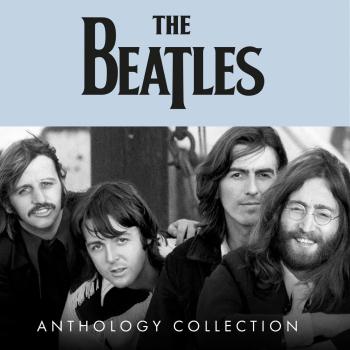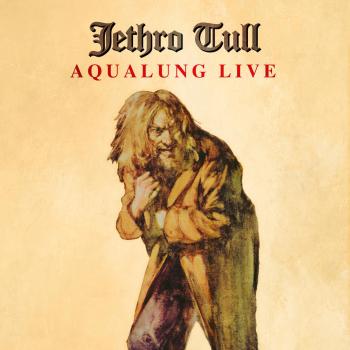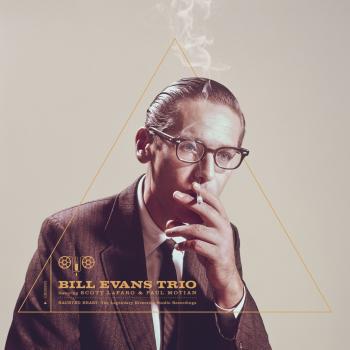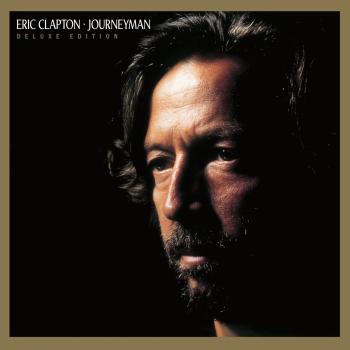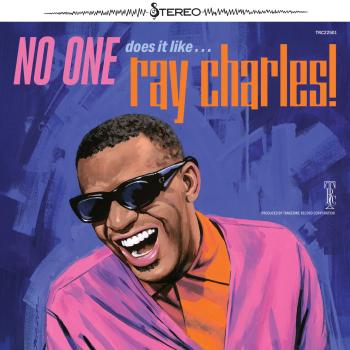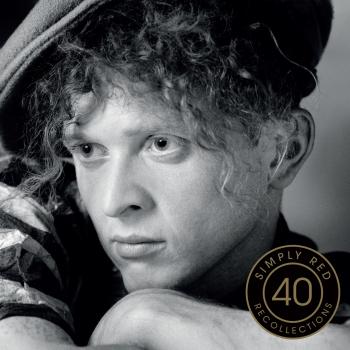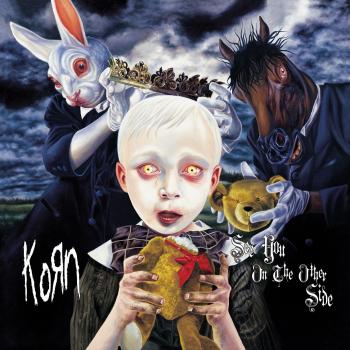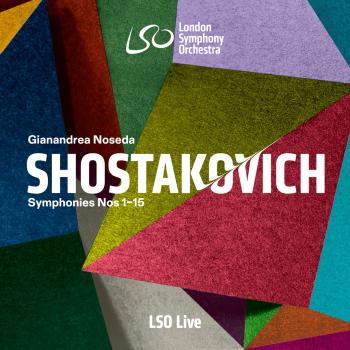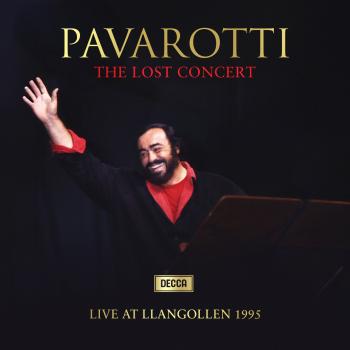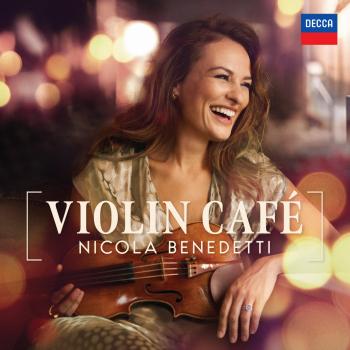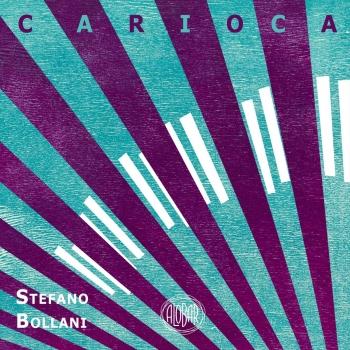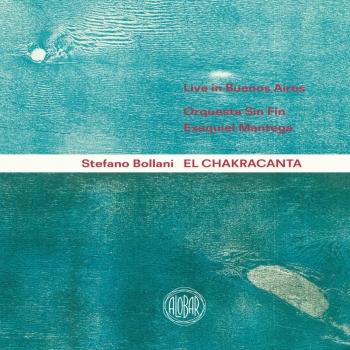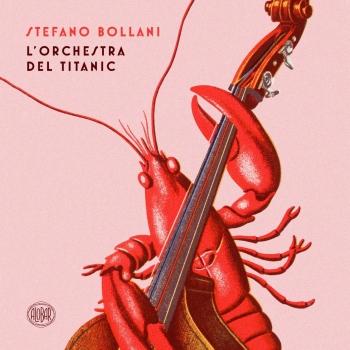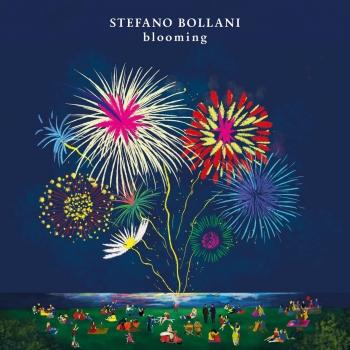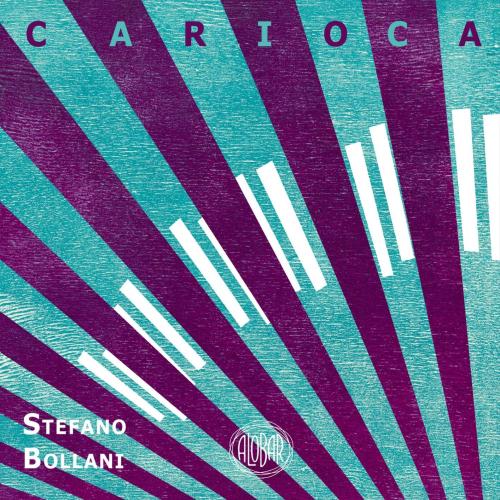
Carioca Stefano Bollani
Album info
Album-Release:
2020
HRA-Release:
19.08.2022
Album including Album cover
I`m sorry!
Dear HIGHRESAUDIO Visitor,
due to territorial constraints and also different releases dates in each country you currently can`t purchase this album. We are updating our release dates twice a week. So, please feel free to check from time-to-time, if the album is available for your country.
We suggest, that you bookmark the album and use our Short List function.
Thank you for your understanding and patience.
Yours sincerely, HIGHRESAUDIO
- 1 Luz Negra 05:02
- 2 Ao Romper da Aurora 01:44
- 3 Choro Sim 02:21
- 4 Valsa Brasileira 04:44
- 5 A Voz do Morro 04:17
- 6 A Hora da Razão 03:55
- 7 Segura Ele 01:59
- 8 Doce de Coco 03:24
- 9 Folhas Secas 05:08
- 10 Il Domatore di Pulci 03:22
- 11 Samba e Amor 04:20
- 12 Tico Tico no Fubá 03:22
- 13 Caprichos do Destino 04:25
- 14 Na Báixa do Sapateiro (Live) 08:59
- 15 Apanhei-Te Cavaquinho (Live) 05:56
- 16 Trem das Onze / Figlio Unico (Live) 05:29
Info for Carioca
Wenn Stefano Bollani mit seinem Album “Carioca” darauf spekulieren sollte, zum Ehrenbürger Rio de Janeiros ernannt zu werden, könnte ihm das glatt gelingen. Zumindest wenn es nach brasilianischen Kritikern und Jazzfans ginge. Die feierten den italienischen Pianisten für seine meisterhafte Einspielung brasilianischer Klassiker nämlich überschwenglich.
“Carioca” ist freilich nicht Bollanis erste Auseinandersetzung mit der brasilianischer Musik gewesen: auf dem 2003 erschienenen Album “Falando De Amor” hatte er schon einmal seine Liebe zu den Kompositionen Jobims zum Ausdruck gebracht. Deshalb blieben dessen Werke diesmal außen vor, auch wenn Bollani wegen des 50jährigen Jubiläums der Bossa Nova noch einmal einen guten Vorwand gehabt hätte, um erneut im umfangreichen Repertoire Jobims zu fischen. Tatsächlich ist es aber ein wahrer Glücksfall, daß der Mailänder gerade dies nicht tat.
Denn so präsentiert er auf “Carioca” ein wesentlich komplexeres Abbild der traditionellen Musik Rio de Janeiros. Mit Ausnahme der von Edu Lobo und Chico Buarque geschriebenen “Valsa brasileira” und einer Eigenkomposition Bollanis stammen alle Stücke aus der Vor-Bossa-Nova-Ära. Das Programm besteht aus diversen Sambas, brasilianischen Tangos (die sich übrigens deutlich von den argentinischen unterscheiden) und vor allem rasanten Chorinhos.
Der in der Regel rein instrumentale Chorinho wird – stark vereinfachend – gerne als das brasilianische Pendant zum New-Orleans-Jazz bezeichnet. Und insbesondere mit seinen virtuosen Interpretationen von Stücken wie"Segura ele", dem weltbekannten Klassiker “Tico-tico no fubá”, “Doce de coco” und “Apanhei-te, Cavaquinho!” begeisterte Bollani die brasilianischen Kenner der Materie. Mit “Il domatore di pulci” schrieb der Pianist für “Carioca” sogar selbst eine wunderbare Chorinho-ähnliche Nummer.
Hervorragende und fachkundige Unterstützung erhielt Bollani bei seinem zweiten Ausflug auf das brasilianische Musikterrain von einigen der besten Jazzmusiker jenes Landes: dem Gitarristen Marco Pereira, Kontrabassist Jorge Hélder, Schlagzeuger Jurim Moreira und Perkussionist Armando Marçal. Einige solistische Höhepunkte steuerten außerdem die Saxophonisten Zé Nogueira und Mirko Guerrini sowie Klarinettist Nico Gori bei (Guerrini und Gori sind auch Mitglieder von Bollanis regulärem Quintett). Als Gäste treten darüber hinaus die Vokalisten Zé Renato (in “Hora da razão”) und Monica Salmaso (in “Folhas secas”) auf. Bei der abschließenden Nummer “Trem das onze – Figlio unico” ist dann Bollani höchstpersönlich als Sänger zu hören.
Als sechsjähriger Knirps hatte Stefano Bollani (1972 in Mailand geboren) davon geträumt Sänger zu werden. Schon damals begleitete er sich, wenn er sang, selbst auf einem Keyboard. Einige Jahre später nahm er eine solche heimische Solo-Performance auf Kassette auf und schickte diese seinem Idol Renato Carosone zu. In einem beigelegten Brief berichtete Stefano ihm von seinem Traum, eines Tages eine Karriere als Sänger einzuschlagen. Carosone schrieb zurück und gab ihm den Rat, sich viele Blues- und Jazzaufnahmen anzuhören. Und Bollani tat wie ihm geheißen.
Die erste Platte, die er in die Hände bekam, war eine Beilage des zweiten Bandes der von den Fabbri-Brüdern herausgegebenen Jazzenzyklopädie (Fratelli Fabbri Editori). Mit elf Jahren schrieb sich Stefano am Luigi-Cherubini-Konservatorium in Florenz ein, wo er 1993 sein Diplom als Pianist machte. Bereits mit 15 Jahren spielte er professionell überwiegend Popmusik und studierte nebenher bei Luca Flores sowie Mauro Grossi und besuchte an der Accademia Nazionale del Jazz in Siena Seminare von Franco D’Andrea.
1996 lernte er am Teatro Metastasio in Prato Enrico Rava kennen, der ihn sofort dazu einlud, mit ihm in Paris aufzutreten. “Du bist jung und hast noch keine Familie”, sagte ihm Rava damals. “Riskier es, gib die Popmusik auf und widme dich ganz und gar der Musik, die du liebst.” Bollani nahm sich Ravas Ratschlag zu Herzen, stieg während einer laufenden Tournee aus der Band des Italo-Rappers Jovanotti aus und stürzte sich auf den Jazz, die Sprache der Improvisation und Freiheit.
Blitzschnell machte sich Bollani in der Jazzszene einen Namen: erst durch die wichtige und anhaltende Zusammenarbeit mit seinem Mentor Enrico Rava, dann als ihn das Fachmagazin Musica Jazz zum besten neuen Talent des Jahres 1998 kürte. Darüber hinuas leitete Bollani das Orchestra del Titanic (mit dem er zahllose Konzerte gab und zwei Aufnahmen für das Label Via Veneto machte), spielte Alben unter eigenem Namen ein, trat in Shows zu Ehren von italienischen Poplegenden wie Peppe Servillo, Irene Grandi, Marco Parente, Elio e le Storie Tese, Gianmaria Testa und Banda Osiris auf und strich im September 2003 in Neapel den Premio Carosone ein, der normalerweise nur an Sänger verliehen wird. Sogar in Japan verzeichnete Stefano Bollani Riesenerfolge. Das Swing Journal, Japans maßgebliche Jazzpublikation, verlieh ihm 2003 als erstem europäischen Musiker den New Star Award. Die sicherlich kurioseste Ehrung wurde dem Pianisten im Mai letzten Jahres zuteil, als er das Cover eines italienischen Micky-Maus-Heftchens zieren durfte.
Enrico Rava ist in den vergangenen gut zwölf Jahren nicht der einzige Jazzmusiker von Weltformat gewesen, mit dem Bollani kollaborierte: auch Richard Galliano, Gato Barbieri, Pat Metheny, Michel Portal, Phil Woods, Lee Konitz, Han Bennink und Paolo Fresu spielten schon mit dem Pianisten zusammen, der mittlerweile auf den großen Bühnen der ganzen Welt (von der Town Hall in New York bis zur Mailänder Scala) zu Hause ist.
Bollanis eigene Musik hat nicht selten einen ironischen Anflug, ist des öfteren unkonventionell und fast schon bizarr, wie etwa “Gnòsi Delle Fanfole”, ein Album, für das er 1998 zusammen mit dem Songwriter Massimo Altomare surreale Lyrik von Fosco Maraini vertonte, oder die “Cantata Dei Pastori Immobili”, eine Art Oratorium für vier Gesangsstimmen, Erzähler und Piano, die auf Texten von David Riondino basiert und von Donzelli 2004 in einem Schuber herausgegeben wurde.
Vier Alben nahm Stefano Bollani für das feine französische Label Bleu auf: “Les Fleures Bleues” (2002 aufgenommen mit Bassist Scott Colley und Schlagzeuger Clarence Penn), eine Hommage an den französischen Dichter, Schriftsteller und Surrealisten Raymond Queneau; das Soloalbum “Smat Smat” (2003); “Concertone” (2004), ein Werk für Jazztrio und Sinfonieorchester (arrangiert und geleitet von Paolo Silvestri); und schließlich “I Visionari” (2006), die erste Aufnahme von Bollanis neuem Quintett mit dem Saxophonisten Mirko Guerrini, Klarinettist Nico Gori, Kontrabassist Ferruccio Spinetti und Schlagzeuger Cristiano Calcagnile. 2003 begann der Pianist außerdem die Zusammenarbeit mit den dänischen Musikern Jesper Bodilsen (Baß) und Morten Lund (Schlagzeug), mit denen er für Stunt Records die Alben “Mi Ritorni In Mente” (2004) und “Gleda – Songs From Scandinavia” (2005) einspielte.
In der Reihe “Racconti di Canzoni” des Elleu-Verlags brachte er 2004 das Buch “L’america di Renato Carosone” heraus, das die Geschichte des Swing und Jazz in Italien und vor allem die Geschichte seines Idols Carosone erzählt. Im Mai letzten Jahres veröffentlichte das italienische Wochenmagazin L’Espresso in seiner Jazz-Serie die erste italienische CD von Bollanis Trio mit dem Bassisten Ares Tavolazzi und Schlagzeuger Walter Paoli. Die vorherigen Alben des Trios waren bei dem japanischen Label Venus Records erschienen.
Im September 2006 erschien Bollanis ECM-Debütalbum “Piano Solo”, das in diversen Jazzcharts gleich auf den vorderen Plätzen landete. Fast zeitgleich kam mit “La sindrome di Brontolo” auch der erste Roman des Pianisten heraus, der scheinbar gewillt ist, in den Spuren seines vielseitigen norwegischen Instrumentalkollegen Ketil Bjørnstad zu wandeln.
Bei den Polls des amerikanischen Jazzmagazins Down Beat belegte Stefano Bollani 2007 den achten Platz in der Sparte “Neue Jazztalente” sowie den dritten bei den aufstrebenden Pianisten. Auch die Kritiker des New Yorker Magazins All About Jazz würdigten die Talente des Italieners, in dem sie ihn in die Liste der fünf wichtigsten Musiker des Jahres 2007 aufnahmen, Seite an Seite mit Legenden wie Ornette Coleman und Sonny Rollins. Im Dezember desselben Jahres erhielt Bollani in Wien als europäischer Musiker des Jahres den European Jazzprize.
Stefano Bollani, piano, vocals (track 16)
Marco Pereira, guitar
Jorge Helder, bass
Jurim Moreira, drums
Armando Marcal "Marcalzinho", percussion
Ze Nogueira, soprano saxophone
Nico Gori, clarinet, bass clarinet
Mirko Guerrini, tenor saxophone
Ze Renato, vocals (track 6)
Monica Salmaso, vocals (track 9)
Stefano Bollani
born 1972, has been no less prodigious. He too started at five years old and cannot recall a time when he was not playing piano. The instrument often seems like an extension of his personality and thought processes, a fast-moving mind finding expression in jump-cut music sequences and surreal juxtapositions. He has fairly romped through the idioms, his ECM “Piano Solo” disc characteristically moving from Prokofiev to the Beach Boys via Scott Joplin and the tango, a post-modernist with an admirable reluctance to take himself too seriously. He keeps finding new ways to address the virtuoso’s dilemma: What do you play when you can play anything? Multi-talented, he’s known in Italy also as author of books and as a TV show host; he tours with pop singer Irene Grandi, plays Gershwin at La Scala. And he returns to particular musical constellations that continue to inspire him. Amongst these: the duo with Enrico Rava, the Danish Trio with Jesper Bodilsen and Morten Lund (which recently recorded a new ECM session, augmented by Bill Frisell and Mark Turner). To these special groups add now the exciting project with Hamilton de Holanda. At the end of August and into September Bollani joins de Holanda for another round of concerts in Brazil.
Jesper Bodilsen
The Danish bass player, composer, producer and educator Jesper Bodilsen was born January 5th 1970 in Haslev, Denmark.
As 3 a year old he moved to Silkeborg with his parents and older brother and there he stayed until he was 18 years old.
No one in his family were playing music. But as a 8 year old kid he found an old trumpet at the loft of his grand parents farm and he was immediately interested in trying to make music with the old horn. At the age of 10 he was admitted as a member of the school brass band there he learned to play the cornet and read music.
In 1984 Jesper got his first bass - an electric bass - and one year later he joined a pop/funk band and played his first professional gig short after. He was admitted at the Royal Academy of Music in Aarhus, Denmark in 1991 where he studied for 5 years and ended up with a Diploma degree in June 1997. The same year as he received The Memorial Bursary of Edward Eriksen and was hired to teach at the academy.
While studying at the school in Aarhus Bodilsen also worked as a professional musician. In June 1994 he was asked to perform at two All Star Concerts at the Riverboat Jazz Festival together with American drummer Ed Thigpen and pianist Duke Jordan. These concerts was a kind of breakthrough for Bodilsen and in the years to come he was peforming with other great jazz artists like James Moody, Benny Golson, Lee Konitz, Tom Harrell, Joe Lovano, Horace Parlan, Jimmy Heath and Phil Woods. Often at the legendary jazz club BENT J in Aahus.
In 1995 Bodilsen moved to Copenhagen and he was immediately asked to join the Erling Kroner Dream Quartet. He was touring with different Aarhus and Copenhagen based bands in the years to come when he in 1997 met Ed Thigpen again. Ed Thigpen wanted him in his trio and together with pianist Carsten Dahl the trio recorded their first album “It´s Entertainment” in 1998. The album was nominated for a Danish Grammy and won the JazzSpecial Prize “Album Of The Year”. Bodilsen was playing and recording with Thigpen until 2010 - a collaboration that lasted 13 years and the music is well documented on 6 album releases.
Jesper Bodilsen has always been interested in producing music, finding interesting musicians to perform with and create new constellations. He has been a co-producer for Danish vocalist Katrine Madsen for more than a decade but in 1999 he started his first band “Scandinavian Summit”. They recorded 2 albums and did tours in Europe, SE Asia, China and Australia.
He started his own music production company in 2002 and until now he has produced more than 15 albums, recorded and performed with many great artists.
In 1998, 2002 and 2004 Bodilsen was asked to perform at the prestigious Jazzpar Prize concerts and in 2002 the prize winner was italian trumpet player Enrico Rava.
Bodilsen did 4 concerts with Rava, Stefano Bollani, Gianlucca Petrella, John Abercrombie and Morten Lund and after the final concert in Copenhagen he asked Bollani and Lund if they would be interested in playing together again.
One year later (in march 2003) they did the first trio tour and their first recording for Stunt Records “Mi ritorni in mente”. The first issue of this trio album was released as Jesper Bodilsen Trio.
In 2004 Bodilsen was awarded with the Django d'Or Prize as “Performer of the Year” and that same year the trio recorded their second album “Gleda”. Now all the names of the trio was on the cover. The album was no. 4 on the Italian Jazz Charts in 2005 and nominated for an Australian Bell Award 2006 for “Best International Jazz Album”.
From the start the trio was touring around Europe playing clubs and festivals like the Umbria Jazz festival, Copenhagen Jazz Festival and the legendary Birdland in New York.
After “Gleda” they recorded with singer Katrine Madsen. The album is called “Close To You” and was nominated for a Danish Music Award as “Best Vocal Jazz Album”.
Then 4 years went by before they recorded again. This time on the highly estimated ECM label and with producer Manfred Eicher. The album “Stone In The Water” was acclaimed the best trio recording of 2009 by several jazz magazines around the world.
Two of the songs on the album was composed by Bodilsen and that same year he went in the studio with Swedish guitarist Ulf Wakenius, Peter Asplund on trumpet and the Finnish vibraphone player Severi Pyysalo to record a new album mainly with his own songs. The album “Short Stories for Dreamers” was released in 2010 and was praised for its calmness and lyrical mood.
Recently Bodilsen has also been a part of the succesful TV-shows “Sostiene Bollani”. In the fall of 2011 the trio, with Bollani being the host, did 6 shows brodcasted on the Italian national channel RAI 3.
Besides touring around the world, recording albums and teaching at the conservatories Bodilsen has also spent more and more time on composing music.
In the fall of 2012 a new album will be released with his music - displaying his skills as a composer, bandleader, bassplayer and producer.
Morten Lund
(born 1972) is a Danish jazz drummer. He co-leads a trio with Italian pianist Stefano Bollani and Danish bassist Jesper Bodilsen, and he is a member of Paolo Fresu's Devil Quartet and Kind of Porgy and Bess ensembles. As a sideman he has participated on more than 60 albums.
Lund was born into a musical family in Viborg, Denmark, in 1972 to a father who played drums, trumpet, and guitar and was active part of the city's jazz scene, and a mother who played flute. At age 6, he started to play drums. He got his first paid jobs at age 15. In 1993 he was accepted into the Royal Academy of Music in Aarhus and only a year later, still a student, he started to play in the internationally recognized Klüvers Big Band. With this band that he recorded his first album.
After receiving his diploma in 1997, he moved to Copenhagen and was soon involved in several projects, recording and going on tours. Jesper Bodilsen, with whom he had studied at the Academy, has been a close collaborator on many projects.[1] In 2002 Lund and Bodilsen were among the musicians selected for the Jazzpar Sextet which Enrico Rava formed, as was virtuoso Italian pianist Stefano Bollani. Because the chemistry was good among them, they formed a trio the following year.[2] Their first album, Mi ritorni in mente, was released the same year to critical acclaim and became one of the ten best selling records in Italy that year.[3]
After tours in Italy and Scandinavia it was clear that the collaboration was going to be of a more lasting nature. They went on to play in jazz clubs and at festivals around the world. Their debut in New York City was at the legendary Birdland Club.[3] In 2006 the trio released their second album, Gleda, which is centred on Scandinavian songs.
This album contains no booklet.

